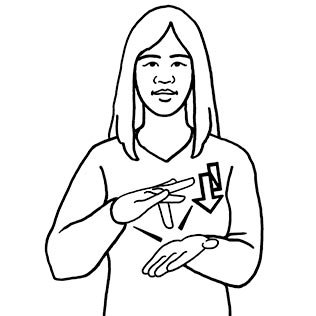
Sociolinguistic typology and sign languages
- Adam Schembri, University of Birmingham
- Jordan Fenlon, Heriot-Watt University
- Kearsy Cormier, University College London
- Trevor Johnston, Macquarie University
Signed and spoken languages all around the world have similarities in their grammar, and also many differences. One of the aims of linguistics – the scientific study of language - is to explain these similarities and differences in the world’s languages.
Some spoken languages, like English or French, are used by large populations of speakers in communities in which many people only learn the language as an adult. Researchers have begun to notice that such languages tend to have more streamlined grammars, with fewer word endings, for example, to show particular grammatical meanings. These languages tend to have separate words for different meanings, rather than lots of different forms of the same word, or lots of different endings on words.
On the other hand, many of the world’s spoken languages are found only in smaller communities with fewer second language learners. Many of these languages tend to have quite elaborate systems of word forms, with many words being made up of many smaller parts, each having different grammatical meanings. Often there are many irregular words in the language too that simply have to be memorised by speakers. In Faroese, for example, the word meaning ‘day’ takes 15 different forms depending on how it is used in a sentence: dagur, dag, dags, degi etc. In English, there are only three forms: day, days for plural, and day’s to show possession.
Some researchers have suggested that languages with large communities and many adult second language learners have fewer and less elaborated word forms because this makes it easier for adults to acquire these languages as there is less grammatical complexity to remember.
So what about sign languages? Sign languages, such as British Sign Language (BSL) here in the UK or Kata Kolok in Indonesia, vary across the world because they emerge spontaneously wherever deaf people come together to form communities. Sign languages are used by smaller populations, but signing communities tend also to include many people, both hearing and deaf, who have learned them as second languages.
So is the grammar of BSL streamlined like English or elaborated like Faroese? Some researchers have suggested it is more like Faroese, because the BSL sign for GIVE has different forms that mean ‘I give you’, ‘you give me’, ‘they give to me’ etc. However, these different forms for GIVE are quite regular, as they move between different locations in the space around the signer in predictable ways (‘I give you’ moves from the signer to the person they are signing to, whereas ‘you give me’ moves in the opposite direction). It may be that sign languages have developed in predictable ways to facilitate learning by the many deaf and hearing adults who do not learn these languages from childhood.
More research on this topic is needed, however, to better understand the complexities of sign language grammars, the structure of signing communities, and how these factors may, or might not be, related. Such research will teach us much about how the diversity of human languages across the world has evolved.